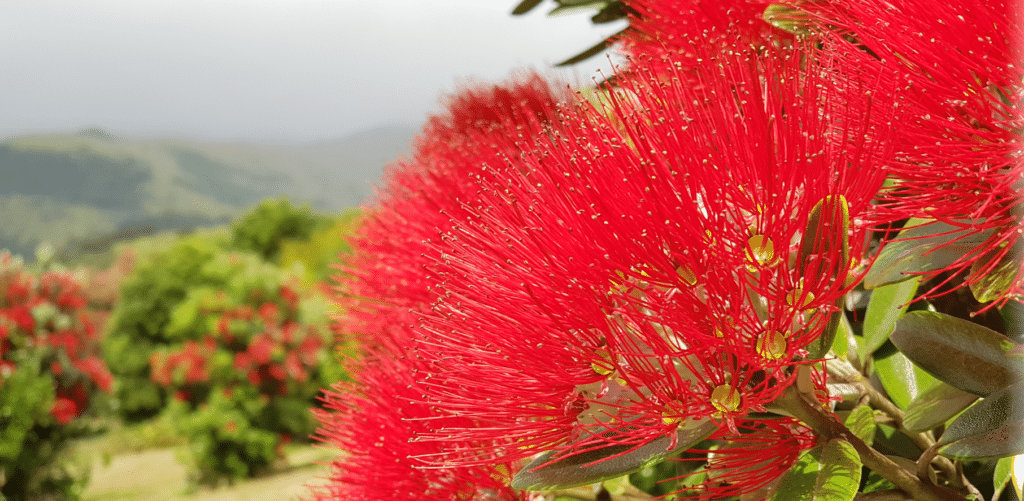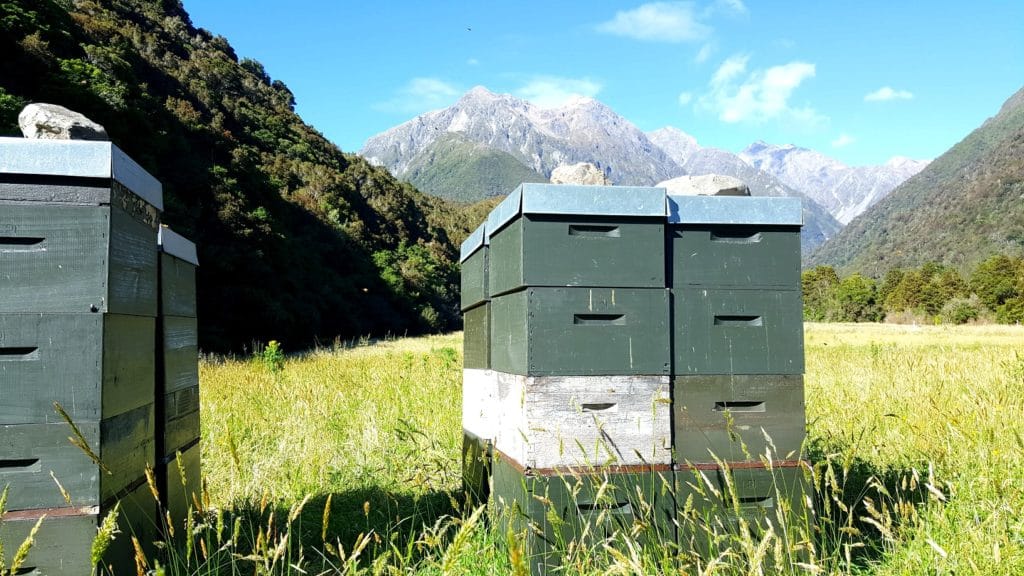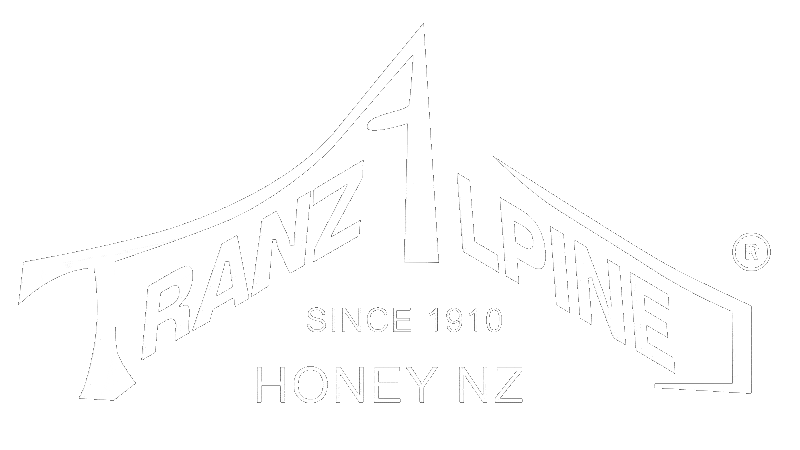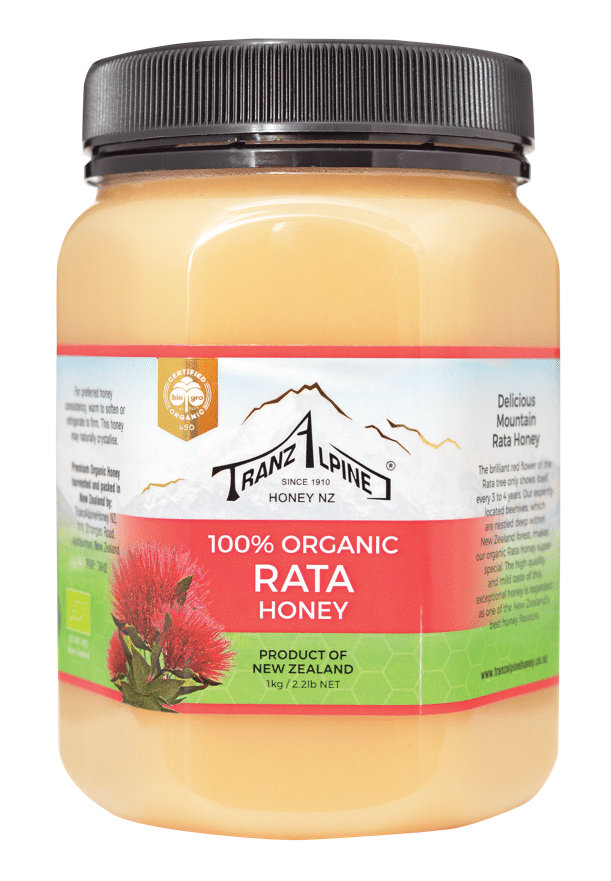
Organic Rata honey
One of New Zealand’s best organic honeys.
Our organic Rata is one of several species of Rata found in New Zealand. Anyone who has seen the Rata tree (Metrosideros umbellata) flowering in January – February in the Otira Gorge cannot forget the sight of this red carpet covering the mountains. The light creamy honey colour matches its mild, unique and subtly salty taste. The brilliant red flower of the Rata tree only shows itself every 3 to 4 years. To make the most of this we’ve nestled our beehives deep within the New Zealand Rata trees which makes our organic Rata honey super-special.
The Metrosideros genus has around 50 species throughout the Pacific and South East Asia.
Another New Zealand Metrosideros species is Pohutukawa (M. excelsa) known as New Zealand’s Christmas tree, also a honey producer, it suffers from flowering at a similar time to other competing nectar sources such as manuka and rewarewa and few examples of Pohutukawa honey have the distinctive characteristics of other Metrosideros species.
ʻōhiʻa lehua (Metrosideros polymorpha) endemic to Hawaii is another well known species and also an excellent honey producer with a similar honey to Rata.
Rata honey is light in colour averaging 22 mm on the pfund scale (Standard Deviation – SD 13.9mm) and distinctively flavoured with an almost salty taste. The pollen is triangular and typical of the Myrtaceae (Myrtle) family which includes eucalypts, bottle brushes (Callistemons), Australian Ti Trees (Melaleucas) and leptospermums (manuka). Another distinctive feature of the Myrtles is their similarity of flower structure.
A minimum of 45% Rata pollen is required to define a honey as Rata (Moar 1985) but this must be accompanied by other characteristic data in the normal range for Rata honey.
Southern Rata flowers from early January to March. The lowland trees start flowering first and the flowering then progresses up to higher altitudes. In some areas it is possible to see a distinct band of red cutting around the mountainsides, the lower trees having finished flowering. The frequency of the Rata flowering is sporadic, some saying it flowers well every 3 years and spectacularly every 7 years. This is an approximation only as it can flower well for 3 years in a row and not at all some years making the honey supply intermittent. This irregularity of supply is offset by Rata being one of the finest honeys in the World, and when a good flowering coincides with with fine, stable weather, it can produce a prolific crop of high quality with some producers exceeding 100 kilograms per hive.

“Fine weather” however is a commodity that is often lacking on the South Island’s West Coast. The “Coast” has a very high rainfall with the Otira region averaging over 300 inches (7,620 mm) of rain per year !
This contrasts with the Canterbury plains less then 100 km away which receives only 25 inches (630 mm) per year. The main cause of this is the rugged Southern Alps lying across the prevailing westerly wind producing wet and dry conditions within only a few kilometres. While flowering intensity is a factor in the Rata crop, the most important factor is a break in what is normally very wet conditions.
Rata honey is one of our fastest crystallizing honeys with a proportionally high glucose content.
Average Fructose 38.0% SD 2.2 Average Glucose 35.7% SD 2.6 (120 measurements ) This can present problems to the producers extracting Rata honey. If they don’t get it extracted and processed ready for sale quickly, it sets hard and stays in the combs! Because of this feature of Rata honey, it is impossible to present it as a liquid honey without severe microfiltering and heat treatment. Rather we utilize this characteristic to create one of our finest creamed honeys.
Another peculiarity of Rata honey is the almost complete absence of higher molecular sugars. While the initial number of analyses showing this information is low, these have shown an almost total absence of oligosaccharides. This is a feature that could be used for floral source identification but generally the other honey types associated with Rata honey are easy to separate. These are typically Kamahi and Quintinea, both of which flower earlier than Rata, have normally represented pollen spectra and are darker in colour. Rata has also been shown to be low in some natural enzymes, particularly diastase and invertase. This is something that is not unusual in plants that evolved in parts of the World that were separated from European flowering plants early in an evolutionary time scale.
Posted in Organic, Product Reviews
Share:


